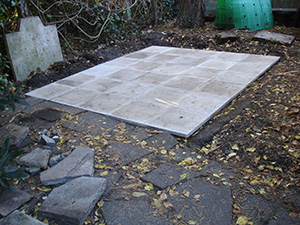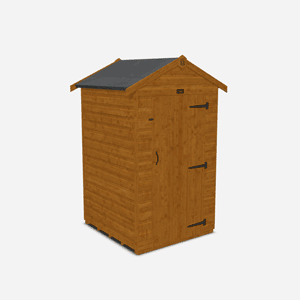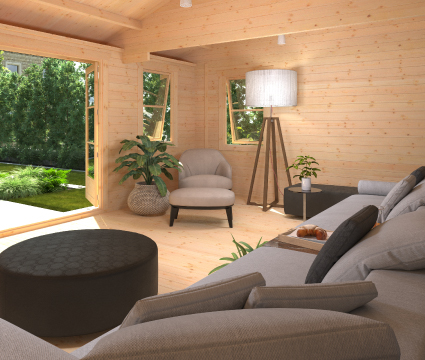
Here are the factors you need to consider before you buy a storage shed:
AREA
1. What Size Storage Shed Do You Need?
To work out how big your storage shed must be, think first about how much space you have. If you have a small garden or yard, space is at a premium – so you may need a storage shed that doesn’t take up too much space.
Before you make the purchase, you also need to think what (and how much) you’ll be storing in the shed. For example, if you only want to store tools, a small tool shed may be what you need. But if you want to store everything from tools to garden furniture, you may need to go for something designed for general storage (which would probably need be larger).
Understanding Dimensions

Bear in mind that one manufacturer will often state sizes differently to the next manufacturer. For example, when a company refers to a 3x7 bike shed, they could be referring to the internal or external dimensions – and they may or may not be including the overhang in their measurements.
Manufacturers also differ in the way they express width and length. At Tiger, the width is always on the gable side, but this is not case for other manufacturers.
With this in mind, be sure to check what the manufacturer is referring to before making the purchase. After all, you don’t want a storage shed that’s too large or small for your needs.
If your ridge height is more than 2.5 metres, you may need to apply for planning permission. Even the largest storage sheds tend to be smaller than this. But if you’re unsure, you should check with your local council before buying the shed.
2. The Shed Base – Where and How?
Like any garden building, your storage shed must have a firm and level base of the right size. Most retailers do not provide a base with their sheds. However, the base must be in place before you install the building.
Shed bases are often made from concrete, paving slabs, or timber bearers – and they can prolong the life of your storage shed.
You must also to decide where to put your base. Other than the space you have available, you need to take the eaves into account. Why? Because if your storage shed is too close to a boundary wall, the eaves may overhang into your neighbour’s property.
It’s also wise to think about the route into the storage shed. If you’re carrying heavy equipment to and from the building, you’ll want to make that task as easy and as pain-free as possible.
Does the Shed Come with a Floor?
Before you buy your storage shed, make sure it comes with a floor as not every manufacturer offers one. Most storage sheds come with pre-attached joists under the flooring to raise the floor off the ground.
If you want to install a wooden base, it’s standard practice to run the timber bears in the opposite direction to the shed’s floor joists. However, this may vary for buildings of different sizes – so check with the manufacturer before laying the bearers.
Is Your Garden Sloped?
We recommend building a base that’s slightly larger than those of the shed. However, if your garden has a slope, you should also bear in mind that water could collect around the shed if the base is too big.
For more information, read our step-by-step guide on building a shed base.

3. Access – Will It Be Easy to Access the Shed from All Entry Points?
Again, think about the size of your garden or yard here – and whether there are ay walls or fences close to the spot you want to build your storage shed. If these boundary points are too close, they make it harder to paint or treat the building.
If you’ve found the perfect storage shed for your needs, but the door is an awkward, some manufacturers can change the door position for you; some even allow you to swap single doors for double doors on certain products.
It would also be wise to consider whether you want left- or right-hinged doors – at Tiger, our buildings come right-hinged as standard, but you may order yours with left-side versions instead.
In addition, some storage shed manufacturers offer pre-hung doors, which can make installation easier if you’re placing the building in a tight space. However, some products come with doors you must hang yourself.
BUILD
Storage sheds are available in a range of materials – and wood, metal and plastic are the most common.
1. Wooden Storage Sheds
Wood is the traditional – and by far the most popular – choice of storage shed material. These buildings come in many shapes and sizes. Some are designed for general use, while others, such as bike sheds or tool sheds, are made with specific uses in mind.
Wooden storage sheds benefit from the natural beauty of timber, but you can paint yours to suit your tastes.
Most of these buildings are dip treated – meaning they are treated with a temporary preserver which helps protect it in storage and transit. They buildings need to be retreated with a wood preservative at least once a year. When properly treated, dip treated timber storage spaces are durable and last for many years.
Some wooden storage sheds, such as the Tiger Pressure Treated Log Store, are pressure treated (or tanalised) and do not need to be retreated.
2. Metal Storage Sheds
Metal storage sheds are sturdy and often require little maintenance.
In particular, storage spaces made from galvanised steel are particularly durable and resist rust better than their non-galvanised counterparts. They do not need to be treated and you don’t even need to paint them. These metal units are also often available in a wide range of colours.
That said, they don’t insulate heat very well – meaning they can be particularly hot in summer (and often painful to the touch), and cold in winter.
3. Plastic Storage Sheds
Lightweight and easy to maintain, plastic storage sheds are available in styles that resemble wood – or even metal. You don’t need to treat or paint them and resist wear and tear quite easily. They are also waterproof and easy to assemble.
On the other hand, plastic storage sheds are less customisable than wooden sheds and can sometimes suffer from the build-up of condensation.
TERMINOLOGY
Need more guidance? Still unsure what the difference is between the ridge and the eaves? Don't worry, our packed Storage Shed Guide is the perfect solution and will clearly explain all the key concepts.







